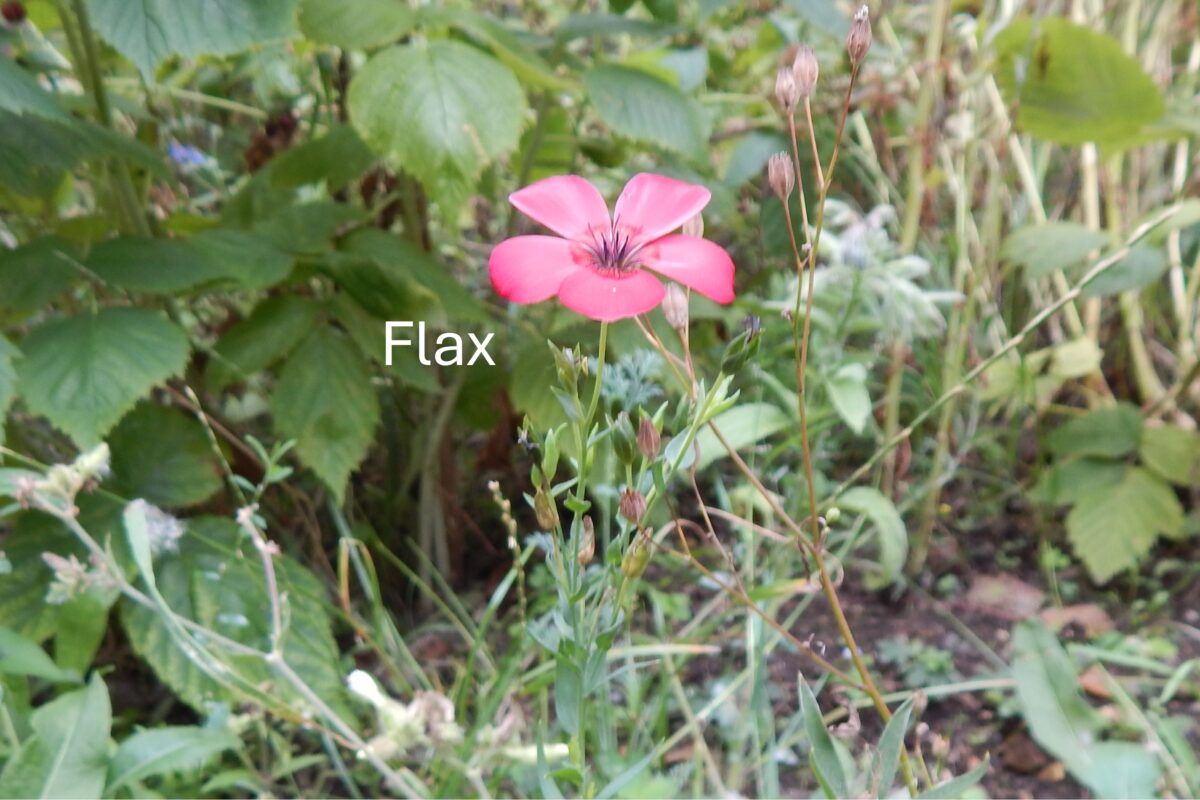The wild flower bed is past its best but we still have California poppies, wild carrot, hedge mustard, corn marigold, flax, purple poppy, white campion, cornflower, borage and teasel. The most prominent is the wild carrot, its flowers somewhat like cow parsley, but when they go to seed, they curl into green, miniature birds nest type structures.
It’s the first time I have seen flax in the bed. The seed is the source of linseed oil, also known as flax seed oil. The oil is used in lino (the full name, linoleum, is more revealing) as the softener in putty, and in oil paints.
The stems of flax are used to make linen. At one time, a cottage industry, though quite arduous. Small scale, the linen was often for family use. Once harvested, the first step involves scraping the outer layer off the stem. The resulting fibre is spun to make yarn. The yarn is then woven to make the linen.
Ferguson’s in Banbridge, Northern Ireland, is the last remaining British mill from linen’s hay day in the 19th century when Northern Ireland produced half the world’s linen. It was brought to Northern Ireland by the Scots who came to the area in the 16th century. They grew it mostly for themselves with the whole family involved in growing, getting the fibre out, spinning and finally weaving. The process became industrialised with the advent of the steam engine.
The Natural Linen Company produces British-made linen in Worcestershire. Linen is also produced in Lancashire, which has a long history of textile production. Linen diminished in use with the introduction of synthetic fibres such as nylon and polyester. Though, it is making a come back because of its sustainability. Its processing uses a lot less water than cotton, and after use linen can be broken down to its fibres, spun again and so re-used. It can be re-used several times, and unlike nylon which ends up in landfill, linen can be composted.
Making linen from flax would be a good project for the community garden. We could certainly grow it. Getting the fibre out is arduous but we won’t be requiring much. For small scale use (very small scale in our case), there are alternatives to spinning wheels and looms.
After two very dry months, May and June, July has at last delivered rain. I have been keeping up the log from our rain gauge. This month we have had 64mm of rain so far, while July’s average in London is 41mm. Very welcome, though I am sure the two dry months have led to crop failures and diminished yields on arable farms.
The rain has been welcome in the pond too. Good for froglets too, who have left the pond and are vulnerable to drying out. They must find a damp hide-a-way to survive.
For the last two months, we have been using a pump in the pond, to help with oxygenation, by pumping air through the water. We are doing this in two areas of the pond, through thin rubber tubing. The pump is kept out of the water, housed within a large pot. We have two pumps; every two days, I take the old one away for recharging, replacing it with the other which has a full battery.

